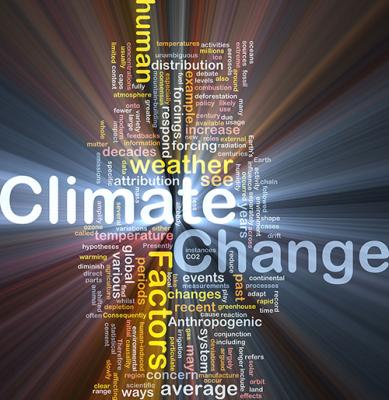Reaching Ambitious Greenhouse Gas Concentration Goals
Researchers at Pacific Northwest National Laboratory found that even though it is technically possible to reach ambitious goals to limit greenhouse gas concentrations by the end of the 21st century, the combined effects of limitations in technology availability and uneven global participation to curb emissions will affect costs. In addition, if the world's largest greenhouse gas emitters do not take any action to reduce emissions by the end of the century, those ambitious goals are impossible to reach no matter how much energy technologies improve.
"Our findings contrast with many previous studies that found bioenergy-carbon capture and storage technologies (BECCS) to be essential to reach ambitious greenhouse gas concentration goals," said Dr. James Edmonds, Battelle Fellow and researcher at PNNL, working at the Joint Global Change Research Institute (JGCRI) in Maryland. "This study shows that while not essential, BECCS could help to substantially reduce the cost of achieving ambitious greenhouse goals."
A PNNL research team led by Edmonds and working at JGCRI used the Global Change Assessment Model (GCAM) to examine hypothetical scenarios in which human-caused greenhouse gas emissions may be constrained to limit year 2100 atmospheric greenhouse gas concentrations to 450 ppm CO2-e (see sidebar, What is CO2-e?). GCAM, developed at PNNL with support from the U.S. Department of Energy, is an integrated assessment model that links economic, energy, land-use and climate systems to show the effects of global change. Using alternative assumptions about technology performance and possible international climate policy decisions, the team investigated the role of technology performance, terrestrial Earth systems, and policy decisions to mitigate greenhouse gas emissions.
They found that while bioenergy and carbon capture and storage technologies may help manage the cost, they are not essential to reaching ambitious climate change goals. Several additional important findings include:
- The ability to sequester carbon in forests and soils is potentially large and comparable in magnitude with amounts of carbon removed from industrial processes for geologic storage. Land-use systems can be an important component of a larger strategy to limit climate change.
- Energy technology performance improvements lowered the economic cost of reaching ambitious climate goals, as did early participation by all nations. The combined effects of technology use and policy decisions had the potential to change costs substantially.
- If large-emitter regions failed to reduce emissions at all during the 21st century, ambitious goals were impossible regardless of how good energy technologies became.
The international policy community has set ambitious goals to limit greenhouse gas concentrations. Achieving these goals would require dramatic changes to the global energy system. But what are the choices, and what is the impact if implementation is limited? The research presented in this paper explored the role of technology and terrestrial Earth systems, as well as interactions between energy technology, land, and policy to illuminate more clearly the range of options available and cost consequences.
Combining bioenergy and carbon dioxide (CO2) capture and storage (CCS) technologies (BECCS) has the potential to remove CO2 from the atmosphere while producing useful energy. BECCS has played a central role in scenarios that reduce climate forcing to low levels such as 2.6 Wm−2. Researchers working at Pacific Northwest National Laboratory and using the Global Change Assessment Model (GCAM), a coupled model that includes biogeophysical and human systems, found that BECCS can potentially reduce the cost of limiting radiative forcing (RF) to 2.6 Wm−2 by 2100 but that a variety of technology combinations that do not include BECCS can also achieve this goal, under appropriate emissions mitigation policies. The researchers noted that with appropriate supporting land-use policies, terrestrial sequestration could deliver carbon storage ranging from 200 to 700 PgCO2-equivalent over the 21st century. They explored scenarios with substantial delays in participation by some geopolitical regions and found that the value of BECCS is substantially higher under delay and that delay results in higher transient RF and climate change. When major regions postponed mitigation indefinitely, it was impossible to return RF to 2.6 Wm−2 by 2100. Neither finite land resources nor finite potential geologic storage capacity represented a meaningful technical limit on the ability of BECCS to contribute to emissions mitigation in the numerical experiments reported in this paper.
Sponsor: This research was supported by sponsors of the Global Energy Technology Strategy Program. Research employed the Global Change Assessment Model whose development is supported by the U.S. Department of Energy's Office of Science as part of the Integrated Assessment Research Program.
Research Team: James Edmonds, Patrick Luckow, Kate Calvin, Marshall Wise, James Dooley, Page Kyle, Son Kim, Pralit Patel and Leon Clarke at PNNL.
Research Area: Climate & Earth Systems Science
Reference: Edmonds JA, PW Luckow, KV Calvin, MA Wise, JJ Dooley, GP Kyle, SH Kim, PL Patel, and LE Clarke. 2013. "Can Radiative Forcing Be Limited to 2.6 Wm-2 Without Negative Emissions from Bioenergy AND CO2 Capture and Storage?" Climatic Change. DOI:10.1007/s10584-012-0678-z.

